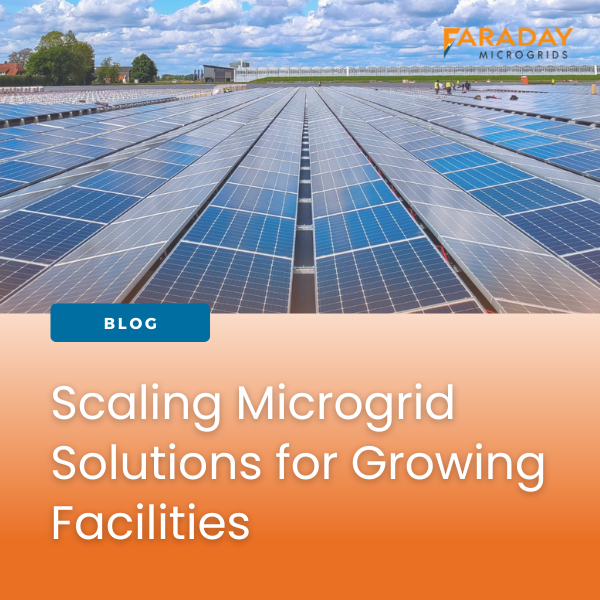Terminology:
Terminology:
The National Fire Protection Association (NFPA) creates the electrical standards that are almost universally adopted into the National Electrical Code (NEC). These standards are also utilized by Federal agencies, such as the Center for Medicare and Medicaid Services (CMS-largest funder of healthcare in the US), and state regulators, such as the Healthcare Access and Information agency in California in the formulation of specific regulations.
Historically, hospitals have been required to rely on diesel generators in the event of power outages.
Not only have diesel generators been around for over a hundred years, but their rates of reliability and safety have been virtually unparalleled. Diesel fuel is neither readily combustible or explosive— factors that are particularly important in critical and sensitive applications like hospitals.
However, there’s real environmental problems due to the lifecycle pollution associated with the sourcing, shipping, storing, and burning diesel – even when it is “clean diesel.”. These issues are beginning to dominate the concerns of diverse stakeholders and, in some geographies, new diesel generators are disallowed.
Updates to Emergency Preparedness Requirements Call Into Question the Preference for Diesel
Per CMS.gov, on September 8, 2016 CMS, in the Federal Register, published the Emergency Preparedness Requirements for Medicare and Medicaid Participating Providers and Suppliers Final Rule.
The regulation became effective November 16, 2016, and detailed logistical requirements for Medicare and Medicaid-participating providers and suppliers in the event of emergencies or natural disasters. Health care facilities, operators, and suppliers affected by this rule were directed to be compliant and implement all regulations one year after the effective date, on November 15, 2017.
Acute care and high level long-term care facilities such as hospitals and senior living facilities are required by the Emergency Preparedness (EP) rule to develop and implement policies and procedures that address alternate sources of energy to maintain temperatures to protect resident health and safety, along with safe and sanitary storage of food and medicine.
CMS requirements for healthcare largely rely upon NFPA 99 and NFPA 110 and, until recently, specified the use of diesel generators as the sole acceptable alternate source. NFPA has since put out revised standards in 2023 that largely eliminate the separation between “normal” and “alternate” power resources and, instead, specify a requirement for reliability using any of several possible power resources.
Disadvantages of Diesel-Only Backup Emergency Power
Yes, diesel is a reliable source of backup power, and, until recently, was the only technology considered to satisfy the CMS requirements for an alternative energy source. Despite not providing any routine value, generators and diesel fuel result in significant expense tied to procurement, storage, generator maintenance and operation, and combustion- effectively a cost without any economic benefit to hospitals other than resiliency.
On top of its high price tag, another disadvantage of diesel is its environmental footprint. In addition to being loud and producing toxic emissions and greenhouse gases that impact local neighborhoods and regions, all aspects of diesel sourcing can contribute to long-lasting environmental harms.
As concepts of health and safety have expanded to include the environment in which people live and work, healthcare facilities have not been immune to stakeholder expectations. Hospitals and long-term care facilities are increasingly expected to nurture the community environment that surrounds them. Reducing or replacing the burning of diesel fuel is a potentially significant contribution to meeting these ever-louder calls.
Diversifying Backup Energy Solutions to Include Alternatives to Diesel
Technology experts and design professionals are increasingly recognizing that multiple, non-overlapping energy resources are the optimal pathway to support resiliency while also being cost-effective and green. Combinations of clean power generation (fuel cells, solar photovoltaics, wind, geothermal, others), co-located energy storage and the controls/systems to manage them have proven to be feasible, safe, and effective alternatives to diesel..
Much like wise financial investment which leverages a diverse portfolio of assets, multi-resource energy microgrids don’t rely upon one resource that could fail and, instead, utilize the advantages of a wide array of resources to provide better performance.
Picture it: when investing, you don’t put everything in cash; Or just stocks or bonds. Rather, you assemble a combination to lower your risk and improve the likelihood of good performance in a broad array of scenarios – even when one sector is facing possible disaster as has been seen with stock crashes, bank failures, and others.
The same is true for alternative energy sources. Diversity improves performance, hedges against problems, and allows facilities to “ride-through” a wider array of disaster scenarios – all while actually improving facility financial performance!
Health care is an understandably conservative industry. Reputations and real lives are at stake, so there’s an understandable hesitance to use new concepts, new strategies, or new systems.
However, the decrease in risk and potential upside for success that comes from embracing two or more energy sources is arguably one of the most important and conservative moves a facility manager can make.
Introducing Microgrids as an Alternative Energy Source
Many experts agree that the CMS waiver is one of several puzzle pieces that have suddenly ‘fallen into place’.
Between the Inflation Reduction Act (IRA), Faraday Microgrid’s successful demonstration projects at acute care hospitals, the CMS waiver and change in NFPA regulations, and the availability of high-performance technologies, healthcare managers have a tremendous opportunity for their facilities to address new energy opportunities but also solve the chronic problems of deferred maintenance, deferred capital renewal, and escalating utility costs.
Microgrids, are quickly becoming a preferred source of alternative energy for medical facilities the nation over. If you disarticulate (or pull apart) the various functions of diesel generators, then the elements of a microgrid cover each performance characteristic, but eliminate the single point of failure that is diesel.
For example: the batteries of a microgrid are good as a capacity storage, much like the diesel has capacity. And just like diesel generators respond to outages by drawing fuel, microgrids can move power around in time and in response to variable power needs.
Additionally, microgrids can optimize when power is generated, stored, and used to meet a rank order of priorities. In the case of solar, for example, though it is only produced during the middle of the day, the energy generated can be stored in the batteries and utilize to buffer power spikes, reduce late-day consumption of more expensive utility energy, and convert variable power quality into stable, high-quality power.
Finally, because a microgrid tends to be modular, it doesn’t fail in the same way that a diesel fails. When a diesel fails, it fails 100%. Microgrids may lose the function of a particular component, but other systems may remain operational. Diversity and redundancy impart reliability.
Diversify Your Backup Energy Sources with a Microgrid
So long as you have two resources for facility power, the specific nature of those resources no longer has to be defined categorically as diesel.
Microgrids leverage the larger grid and offer multiple additional, coordinated power resources to function as the second resource.
At Faraday Microgrids, we specialize in outfitting care facilities with environmentally friendly, budget-conscious solutions that meet the requirements of state and federal energy policies.
Getting started is as simple as requesting a FREE facility analysis.






